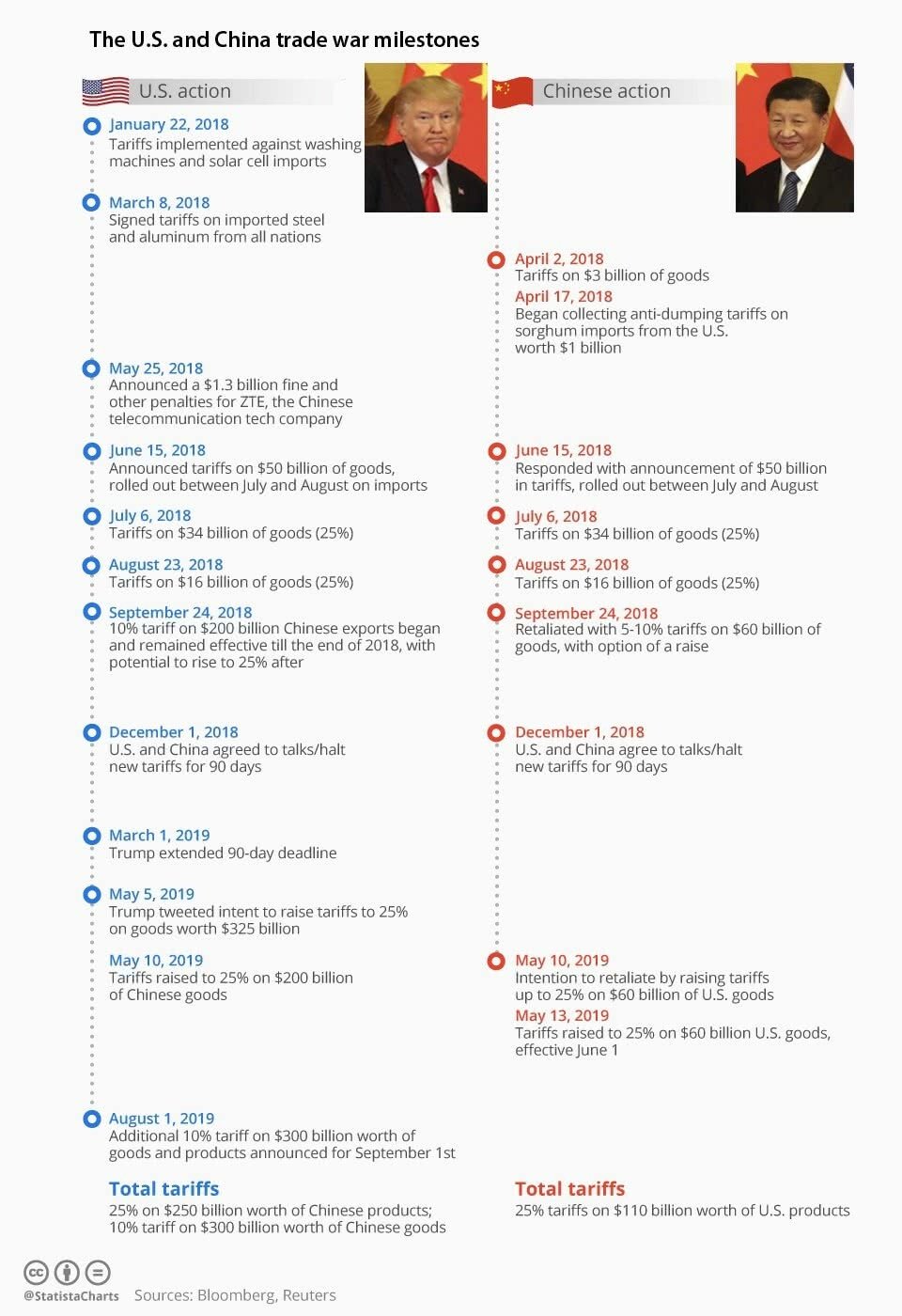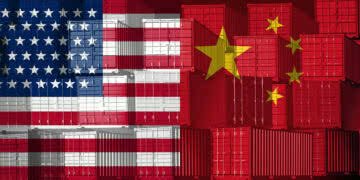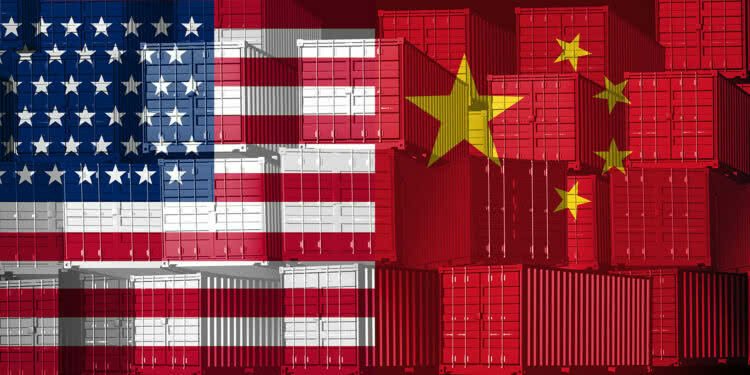The last round of tariffs put in place at the beginning of June 2019 after China announced 25 percent tariffs on U.S. goods worth $60 billion. The back-and-forth started in January 2018 when the U.S. rolled out safeguard tariffs on washing machines and solar cell imports. Less than a month later, President Trump signed tariffs on imported steel and aluminum from all nations. While that was a move directed at all nations, China is the world’s largest steel exporter.
By mid-June 2018, the tit-for-tat trade dispute developed further, with Trump announcing 25 percent tariffs on $50 billion of Chinese goods. China announced tariffs matching that amount that same day. Both countries rolled out the levies over the course of the summer 2018. In late September 2018, Trump instated a 10 percent tariff on $200 billion of Chinese goods effective until the end of 2018, with the potential for it to rise to 25% at the end of the year. In 2019, the rivalry continued. In May 2019, USA raised tariffs to 25% on $200 billion of Chinese goods. China responded with 25 percent tariffs on goods worth $60 billion. While things looked hopeful after the G20 Summit, a deal has still not been reached.

In the meantime, China sees the U.S. as its biggest external challenge when it comes to national rejuvenation. The trade war between the two countries unfolding over the past year is only the tip of the iceberg of intensified competition between China and the U.S. in science and technology, military, foreign policy, and other sectors.
The Indo-Pacific Strategy Report released by the US’s Department of Defense in June stated that the competition between a liberal and authoritarian world order is a primary security concern of the U.S.
The U.S. believes that China is rising as a power not only in the economic and military domains, but also in the appeal power of its development model. China’s political system and ideology are a source of anxiety for the U.S.
The U.S. sees China as “the other,” and finds the rise of China with a different development system difficult to appreciate. Moreover, the U.S. is worried that China intends to alter, and even upend, the current world order and norms led by the U.S. in favor of an anti-U.S. order.
It is dangerous to let China-U.S. competition spill over into the ideological and civilization domains, and undue emphasis on ideological differences will lead to a cold-war style stand-off.
However, many experts consider China-U.S. competition as still manageable and of low intensity: it is centered on national interests. Nevertheless, if competition is inevitable, the two countries must find a way to avoid zero-sum competition or a slide into a cold war.
So far, US is the winner in this game.
In the first half of 2019, while U.S. imports of goods climbed to a historical high of $1.27 trillion (+0.7% YOY), the ongoing trade conflict with China did change the composition of imports to the United States. As the following chart, based on data released by the U.S. Census Bureau shows, imports from China dropped by more than $30 billion in the first six months of 2019.
 If overall imports increased while fewer goods were coming in from China, which means other countries must have seen an increase in demand from the United States. As the following chart shows, several countries saw significant increases in exports to the United States.
If overall imports increased while fewer goods were coming in from China, which means other countries must have seen an increase in demand from the United States. As the following chart shows, several countries saw significant increases in exports to the United States.
Among the U.S.’s most important import partners, Vietnam and Mexico saw the largest increase in demand from the States. According to U.S. Census Bureau Report, with an increase of $7.9 and $3.3 billion, the ASEAN (Brunei, Burma, Cambodia, Indonesia, Laos, Malaysia, Philippines, Singapore, Thailand and Vietnam) and Asia-South (Afghanistan, Bangladesh, India, Pakistan, Sri Lanka) economies became the fastest growing import partners for the United States, respectively.















